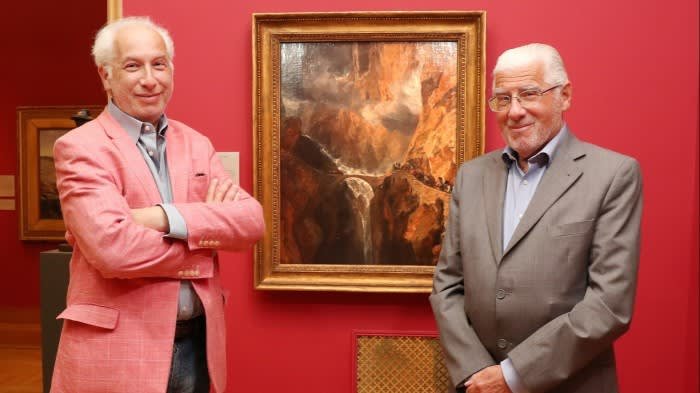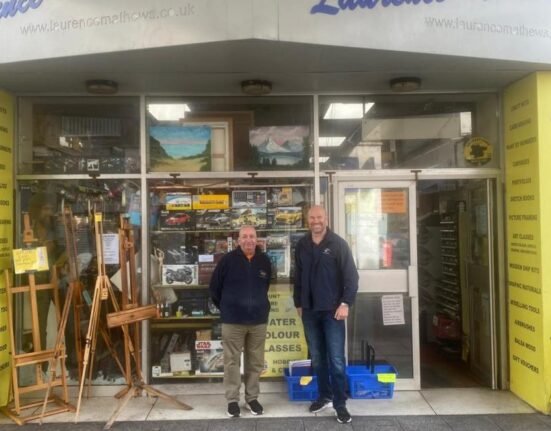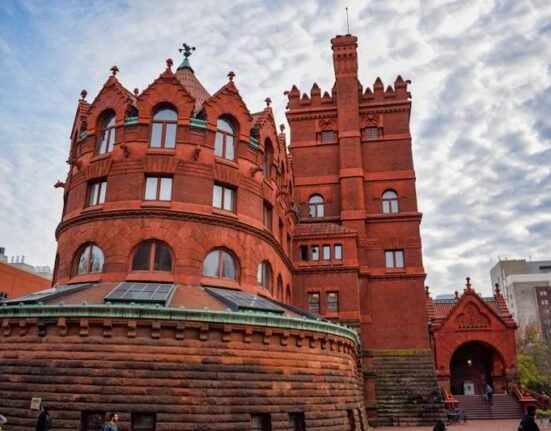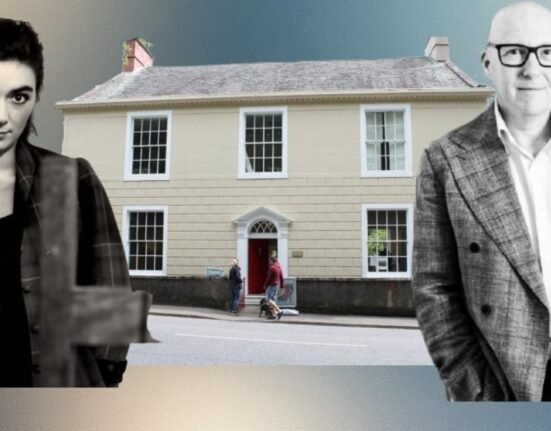“It is the joy of a collector to have so many people enjoy our collection.”
David Lewis, 83, is the creator of the Schorr Collection, one of the largest private collections of Old Master paintings amassed in England since the second world war. It comprises more than 400 paintings, from the greats of past centuries such as Rubens and El Greco to French Impressionists including Sisley and Pissarro, as well as rare books — a total of some 850 artworks collected over 50 years.
His son Howard, who manages the Schorr Collection, has added a new theme with more recent acquisitions: a Japanese fairy-tale series of books entitled “European-Japanese Mukashi-banashi”, published by Takejiro Hasegawa, a businessman of the Meiji Era (1868-1912). The complete set is currently on loan to the Bodleian Libraries in Oxford.
The walls of David Lewis’s spacious home just outside of central London are hung with portraits by Van Dyck and Ferdinand Bol, prints by Munch, an Impressionist painting by Pissarro, drawings by the Art Nouveau artist Aubrey Beardsley, and more.
The scale of the collection would dwarf that of a small museum, but almost half is currently on loan to museums and institutions in the UK and abroad, among them the Fitzwilliam, Ashmolean, Bowes, Hillsborough Castle in Northern Ireland and Dublin Castle in the Republic of Ireland.

After becoming a successful investor in real estate, Lewis began collecting works of art in the 1970s when he bought that large home with his wife Hannah. As they began purchasing works to fill their walls, he says he was awakened to the joys of collecting art.
“When you discover the deliciousness of a new food, you develop a desire to discover even more new tastes,” says Lewis.
As a businessman, Lewis felt he was “a complete amateur when it came to art”, but he expanded his collection by following his own curiosity and the advice of art dealers, historians and gallery owners. He uses three criteria when choosing works: aesthetic, intellectual and emotional value. “A piece must fulfil at least two of these three elements to become a candidate for purchase,” he explains. He insists his collection “is not an investment, and monetary value is not an important consideration”.
As he developed his aesthetic eye, the artworks he chose began to draw the attention of art historians and museum curators, and he received requests to lend out the works. The first piece he loaned, in the early 1970s, was a 17th-century oil sketch by Rubens — a preliminary work in oil on panel for part of the painting on the ceiling of the Banqueting House at Whitehall Palace in London, commissioned by King Charles I.

Howard Lewis explains the background of the work. “Rubens was indisputably a brilliant painter, but aside from his talents with the brush, he was also a diplomat and courtier entrusted to carry important messages to different European royal courts, most of whom employed him.”
The sketch was loaned to the Fitzwilliam Museum in Cambridge, and David Lewis describes this as a turning point for him. Through lending out the works, he says, “I came to want to share the joy of appreciating great art with more people.”

When he began lending items from his collection, Lewis did not publish his name as the owner and simply had them listed as being from a private collection. Then, in 2011, an exhibition of 64 items from Lewis’s collection held at the Walker Art Gallery in Liverpool became the impetus for him to reveal his identity. He called it the Schorr Collection, after his wife Hannah’s family name.
Hannah Lewis is a Holocaust survivor, and in the process of collecting art, Lewis had confronted the issue of cultural property looted by the Nazis before and during the second world war. In 1999, he co-founded the Commission for Looted Art in Europe, which works to return stolen artworks to their original owners, and now serves as its co-chairman. “A few items in the collection were purchased from the original owners after they were finally returned after being looted by the Nazis,” he explains.
Another star piece in the Schorr Collection is JMW Turner’s “The Devil’s Bridge, St Gotthard”. The year after Lewis purchased the work in 1976, he lent it to a museum in Switzerland. “The Turner painting is an image of the Swiss Alps and that was why this museum in Zurich was very keen to have it on loan from us,” he explains. It is now on long-term loan to the Ashmolean Museum in Oxford.

Lewis explains that purchasing the piece “made me realise that all great works of art are historically connected, and it inspired me to develop an eye as a collector.” He explains, “The Turner painting focused my attention on landscapes from Rubens or Claude through Gainsborough and the Dutch masters, and how each period and school reflected what had been created before. How Modigliani can connect back to El Greco. How Wright of Derby was influenced by Caravaggio and his Italian and Dutch followers. How Van Dyck influenced almost every portrait artist thereafter.”
The Lewis family’s country house in Sussex is also filled with art. One of the gems there is a Rubens landscape titled “La Charrette embourbée”, a relative rarity among the output of an artist better known for painting portraits and historical or biblical scenes. According to experts, only around 30 Rubens landscapes are known to exist; this is one of only two in private hands.
Another prize piece in the country house is a landscape by the French Impressionist Sisley, “Autour de la forêt, matinée de juillet”. A second Sisley landscape in the collection is “Port-Marly sous la neige”.

Any collection reflects the tastes of the owner, but it takes on new life as it is passed down to its future custodians. Lewis stresses his belief that “private collectors have a responsibility to preserve great art in their own lifetime and pass it on to the next generation.”
Lewis spent 11 years preparing a two-volume, 750-page catalogue of the collection, which was written by art scholar Christopher Wright. The two of them spent eight years visiting the places where the artists had worked to explore the background of the works.
Although Lewis modestly calls himself an “educated amateur”, he shows considerable expertise in his attitude towards engaging directly with the artworks, sharing their value, and thinking about how to preserve them for the future.







